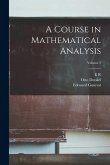Théorie des fonctions doublement périodiques et, en particulier, des fonctions elliptiques, by Briot and Bouquet, is a seminal work in the field of mathematical analysis. Published in 1858, this treatise provides a detailed exploration of doubly periodic functions, with a specific focus on elliptic functions. This book offers rigorous mathematical treatments and proofs that remain valuable for mathematicians, researchers, and students interested in the historical development of complex analysis and number theory. Briot and Bouquet's systematic approach and clear exposition make this book an enduring resource for those studying advanced mathematical concepts. It provides insights into the foundational theories that underpin modern mathematical analysis. This work has been selected by scholars as being culturally important, and is part of the knowledge base of civilization as we know it. This work was reproduced from the original artifact, and remains as true to the original work as possible. Therefore, you will see the original copyright references, library stamps (as most of these works have been housed in our most important libraries around the world), and other notations in the work. This work is in the public domain in the United States of America, and possibly other nations. Within the United States, you may freely copy and distribute this work, as no entity (individual or corporate) has a copyright on the body of the work. As a reproduction of a historical artifact, this work may contain missing or blurred pages, poor pictures, errant marks, etc. Scholars believe, and we concur, that this work is important enough to be preserved, reproduced, and made generally available to the public. We appreciate your support of the preservation process, and thank you for being an important part of keeping this knowledge alive and relevant.
Bitte wählen Sie Ihr Anliegen aus.
Rechnungen
Retourenschein anfordern
Bestellstatus
Storno








